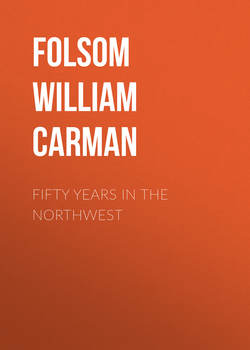Читать книгу Fifty Years In The Northwest - Folsom William Henry Carman - Страница 38
CHAPTER IV.
POLK COUNTY – DESCRIPTION AND HISTORY
THE FIRST LOGGERS
ОглавлениеThe first logs were cut by J. R. Brown on the Taylor's Falls flat in the winter of 1836-37, but the first regular outfit and camp was that of John Boyce, who came up in a mackinaw boat from St. Louis with eleven men and six oxen, landing at St. Croix Falls late in the fall of 1837. Mr. Andrew Mackey, who was in his party, has furnished me with some items regarding this adventure. The boat was cordelled over the rapids, and, with poles and lines, taken as far as the mouth of Kanabec river, where a camp was established. Boyce had considerable trouble with the Indians. Little Six, a Chippewa chief, came to the camp with two hundred warriors in a defiant, blustering manner, telling him to "go away," to "go back where they came from." Boyce proceeded to the Indian mission at Lake Pokegama and invoked the aid of Rev. Mr. Boutwell, Ely, Ayers and Seymour, who came back with him to the camp and had a "talk" with Little Six, who claimed that the whites had paid no money. Mr. Seymour explained to them the provisions of the treaty, of which they would soon hear; that under its provisions the whites had a right to the timber; that they were not usurpers, that they would live peaceably and not disturb their game. The Indians granted assent, but refused to allow the whites to remove any of their chingwack (pine). Mr. Seymour, apprehending trouble, advised Mr. Boyce to leave. He determined to remain. The Indians being still troublesome, Mr. Boyce descended the river to the falls, the Indians following. On going over the falls the boat filled and Mr. Boyce lost nearly all he had. The Palmyra shortly after broke the silence of the Dalles with its shrill whistle and brought the news of the ratification of the treaty by Congress. Boyce sent his boat down the river, built small boats and made haste to return to his camp on Kanabec river, where he remained through the fall and winter cutting logs.
